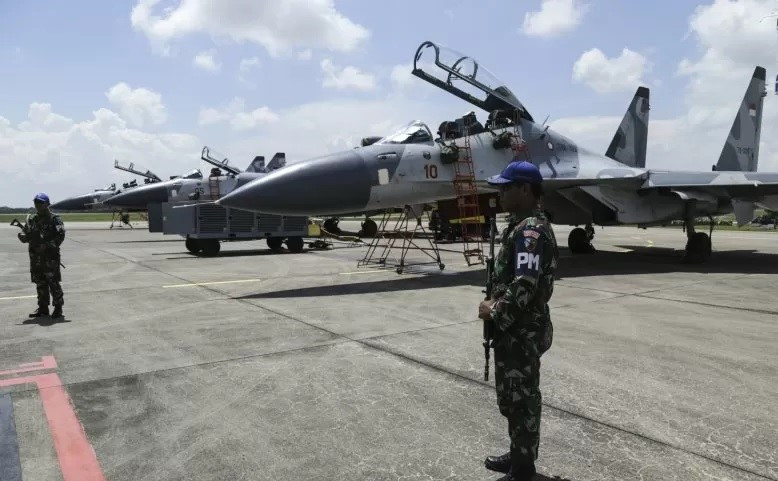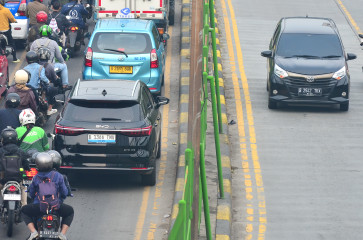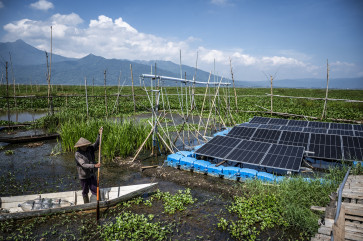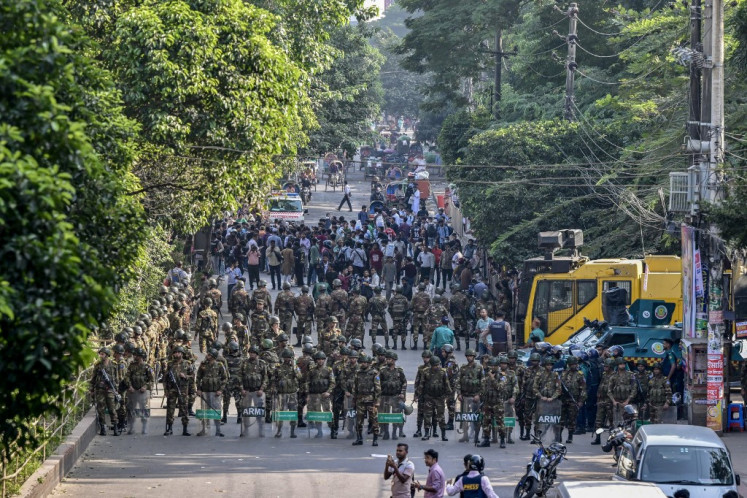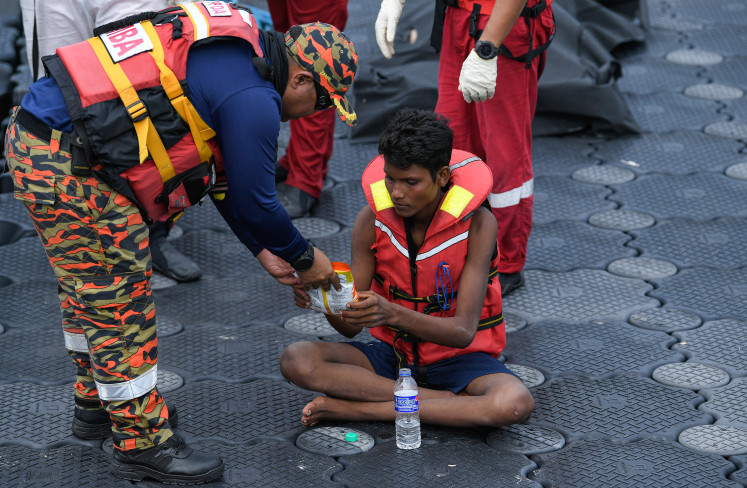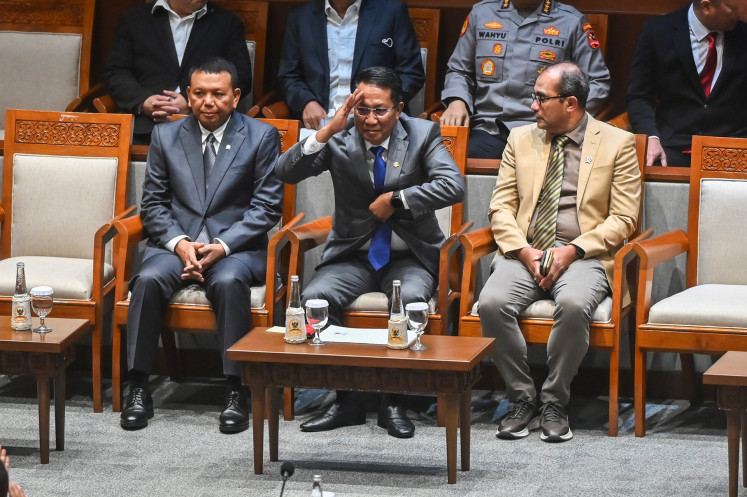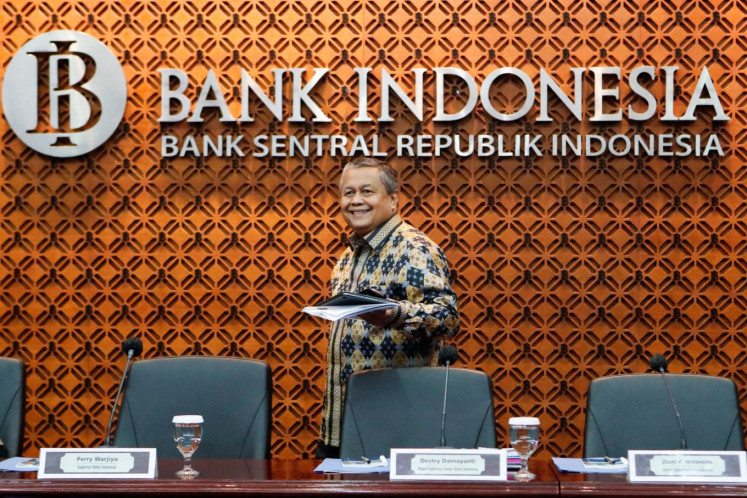Popular Reads
Top Results
Can't find what you're looking for?
View all search resultsPopular Reads
Top Results
Can't find what you're looking for?
View all search resultsReevaluating Indonesia’s air defense concept: A lesson from India-Pakistan conflict
The procurement of advanced fighters will only carry strategic value if the country is able to deploy them freely and effectively in its critical air zones.
Change text size
Gift Premium Articles
to Anyone
T
he recent clash between India and Pakistan marks a significant development in the regional air power constellation. This event has sparked strategic concerns about Indonesia’s procurement of advanced weaponry and its unresolved airspace sovereignty issues, particularly in critical border regions such as the Strait of Malacca.
This essay argues that the development of a national air defense system cannot be separated from full operational control of national airspace. Without sovereign authority over its own skies, investment in advanced air defense weaponry becomes strategically irrelevant. This is a strategic framework for building Indonesia’s air defense system in a comprehensive, gradual and geography-informed manner, based on real threats.
The air battle over Kashmir between India and Pakistan last week delivered a jolt to the global understanding of modern air warfare. Pakistan’s Air Force (PAF), operating Chinese-made J-10C fighter jets, claimed to have shot down several Rafale combat aircraft, long considered a symbol of NATO-standard technological superiority, belonging to the Indian Air Force (IAF).
This event not only showcased Pakistan’s combat capabilities and China’s growing technological prowess but also provoked a broader discourse on the effectiveness and relevance of arms acquisitions by developing countries, Indonesia included, within the wider defense system context.
Indonesia’s ongoing purchase of Rafale aircraft has drawn attention, especially when contrasted with the current status of its national airspace, parts of which remain under foreign management.
The 2022 agreement between the Indonesian and Singaporean governments, which delegated the management of airspace over the critical border area of the Strait of Malacca to Singapore, presents a stark paradox: Indonesia is investing in high-cost military assets while lacking the full authority to operate them strategically in its most vulnerable airspace. This area, in fact, should be the primary focus in the blueprint of any air defense system.
A primary obstacle in building a robust national air defense system is Indonesia’s limited authority over its own airspace. The airspace above the Riau Islands and the Strait of Malacca, from sea level to 37,000 feet, has remained under Singapore’s operational control for air traffic services for 25 years and is subject to extension, as stipulated in the 2022 bilateral agreement.
This dependency directly undermines the operational capacity of the Air Force to conduct patrols, training exercises and air law enforcement in this strategically vital zone. Without sovereign operational authority, air defense development becomes ineffective, akin to owning advanced weapons but lacking the right to carry or train with them on the actual battlefield.
Air defense is not merely about fighter aircraft or anti-aircraft missiles; it is an integrated system that forms a subsystem of the broader national defense system. Its effectiveness relies on long-term planning, geographical awareness and integration with various elements: radar networks, command and control systems, main and forward airbases, and air surveillance intelligence.
As many military experts have highlighted, air defense is only effective when based on geographic mastery and field-tested operational experience. The system requires years to develop and demands inter-regime consistency. Thus, air defense is not an instant project to be accomplished within a five-year political term, but a strategic process grounded in a strong national doctrine and full sovereignty as fundamental prerequisites.
There is a common misconception, among the public and even among policymakers, that air power is defined by the number of fighter jets a country possesses. In reality, fighter aircraft are merely one component of a comprehensive air defense system. As main weapon systems (alutsista), fighter jets cannot generate strategic effects without being supported by a complete network: reconnaissance radars, early warning sensors, tracking systems and an integrated command-and-control structure.
In Indonesia’s case, owning aircraft like the Rafale does not automatically confer air superiority, especially if those jets cannot be flown freely in the critical airspace they are meant to defend. Thus, air defense development must start from building the system, not merely buying the platform.
The most strategic step in enhancing Indonesia’s air defense is to regain full control over its national airspace, particularly in critical border zones such as the Strait of Malacca. Without this step, Indonesia will remain strategically impotent.
This reclamation effort requires a multifaceted approach, diplomatic, technical and military. The government must pursue assertive yet lawful renegotiations based on international aviation law, referencing the 1944 Chicago Convention and Law No. 1/2009 on aviation, which affirms that a state holds full and exclusive sovereignty over its airspace. Persuasive efforts are also needed to end the colonial legacy of foreign control over sovereign territory. International relations must be guided by mutual respect and understanding, with full recognition of each nation’s strategic interests.
The success of a nation in building its air defense system is the product of dedication, political will, and a deep understanding of operational sovereignty. Pakistan, for example, did not simply purchase J-10C fighter jets from China, but also built supporting doctrine, training systems and operational structures to integrate them into a formidable air defense apparatus.
Indonesia should learn from this approach and end the pattern of acquiring military assets without first establishing the systems to utilize them. Instead of chasing “symbolic prestige”, Indonesia’s defense strategy must be grounded in geographic reality, threat perception and the capacity to control its own airspace.
Indonesia cannot fully develop its air defense without achieving operational sovereignty over its national airspace. The procurement of advanced fighters like the Rafale will only carry strategic value if the country is able to deploy them freely and effectively in its critical air zones, zones that constitute the front lines and center of gravity of national defense.
Therefore, the current defense policy priority must be to reestablish sovereign control over national airspace and develop an air defense system that is gradual, integrated and rooted in a strong national doctrine.
***
The writer is a former Air Force chief of staff and chairman of the Indonesian Air Power Studies Center (PSAPI). The views expressed are personal.

